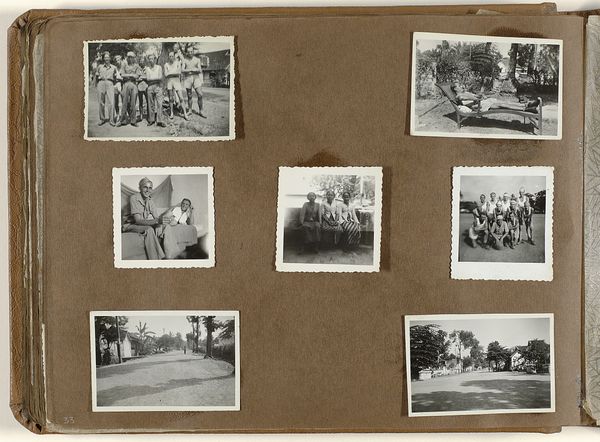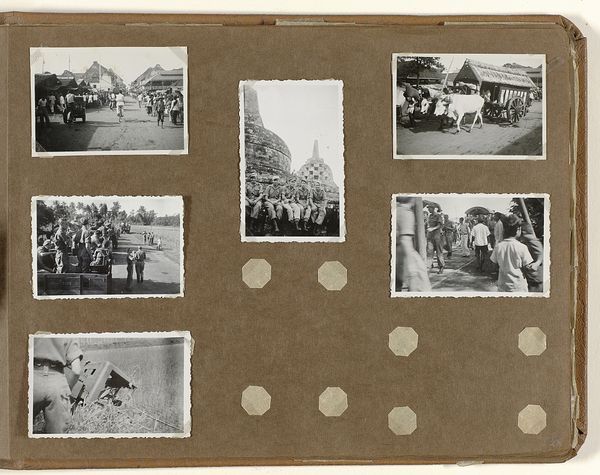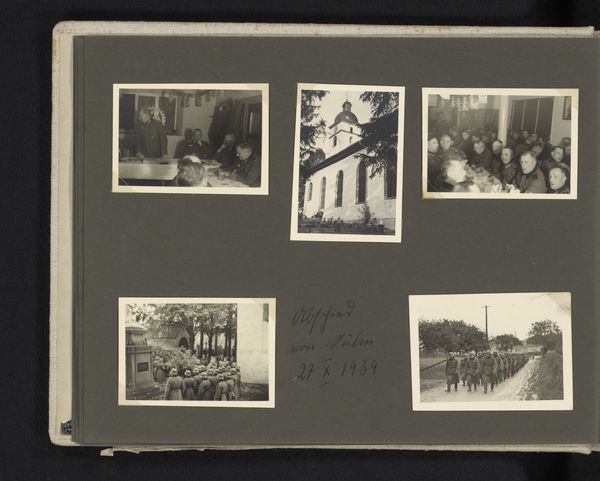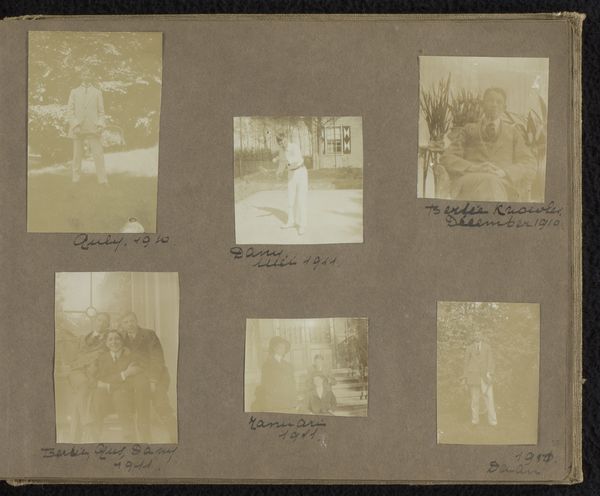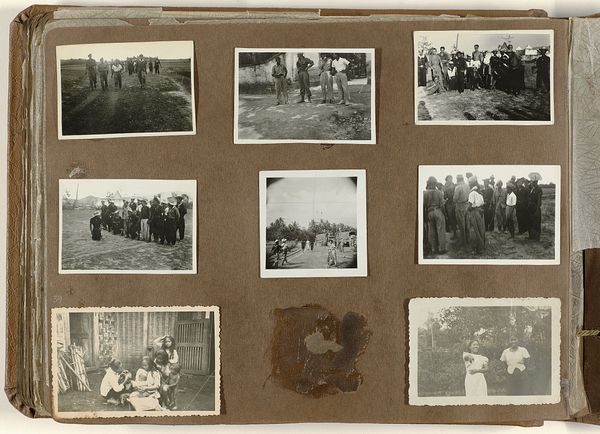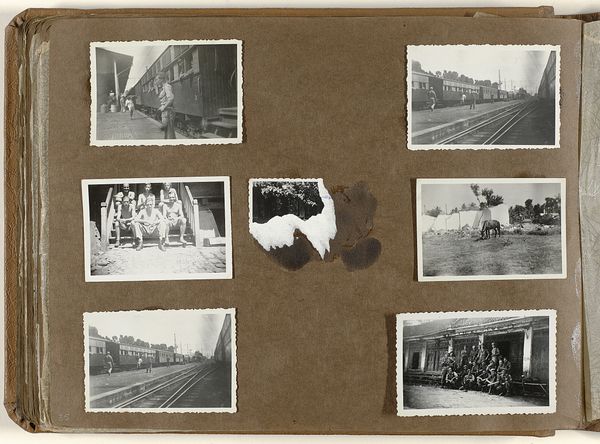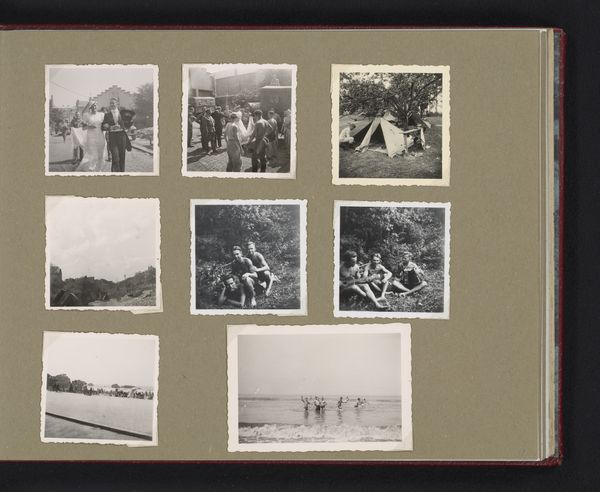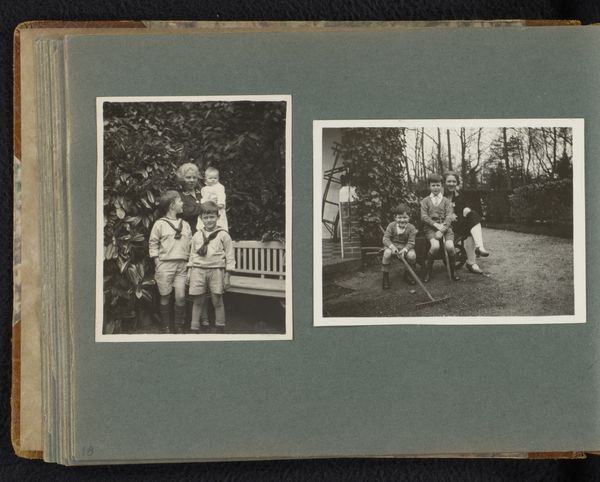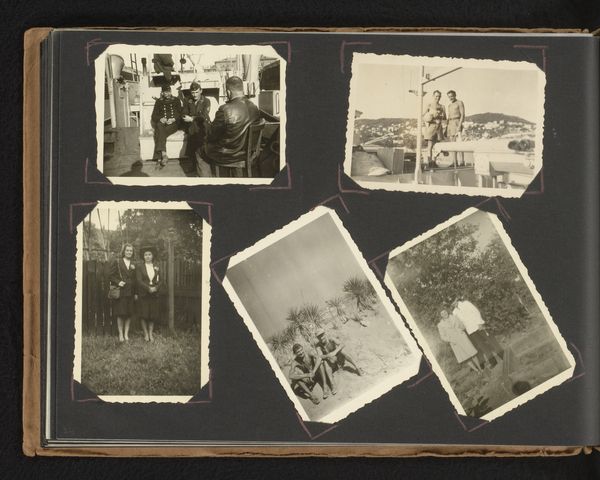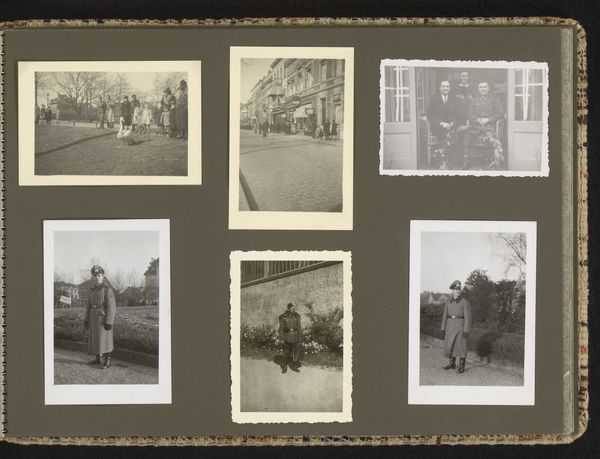
Dimensions: height 24 cm, width 34 cm
Copyright: Rijks Museum: Open Domain
Curator: Here we have a spread from a photo album entitled "Op patrouille", dating from 1948-1949. These are albumen prints depicting what seems to be military personnel in a tropical landscape. What catches your eye? Editor: The stark contrast, the tonal range within this series of photographs, projects an aura of solemnity. And also I note that all of the photos exhibit signs of slight silvering in the darker portions of the photographs. Curator: Silvering is commonly found in older prints; it has a reflective, metallic sheen when viewed at an oblique angle and certainly gives them added character. These prints function almost as reportage from a specific socio-political context—the colonial military presence, the power dynamics visible even in their arrangement within the album. The historical context surrounding these photographs needs understanding. Editor: It’s a very linear composition with repetitive borders throughout each print and an echoing of squares in the frame corners, and though disparate scenes are pictured, I would consider the photo series as one composition as its formal visual cues connect the series of snapshots. Curator: Exactly, the album itself is an artifact that requires some attention, almost as an institution—a curated collection of memories designed for a specific audience and perhaps tailored to show what colonizers wished others to believe was actually the status of daily life in colonial society. The album becomes an instrument for presenting self-justification by means of a photo's claim to record some kind of neutral truth. Editor: I also read some vulnerability in this visual display; though these are military images, the silvering suggests these might be aged memories with some sorrow tied into this project. Curator: That may be over-interpreting the materiality, but your reading makes me ponder the individuals included. We can now recognize the staged elements within photographs more easily, considering how media shapes the public narrative. How these prints are mounted and contextualized emphasizes both the collective nature of colonial enterprise and the constructedness of its projected image. Editor: Perhaps these impressions are both true: visual record and staged artifact. And there's real pathos locked within them, if you accept their formal attributes like visual style as also culturally inscribed. Thank you; this series requires greater analysis of those connections.
Comments
No comments
Be the first to comment and join the conversation on the ultimate creative platform.
